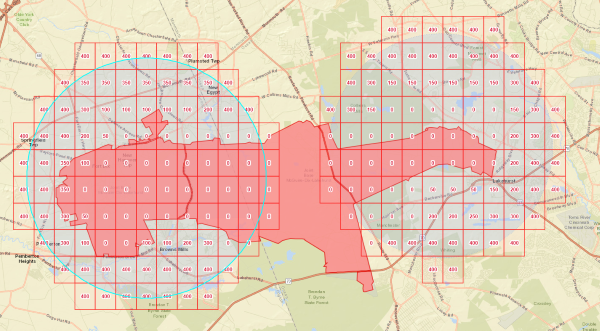JB-MDL UAS Facility Map

The graphic above shows some extremely important information regarding UAS restrictions and operations around the Joint Base. Both drone hobbyists and commercial operators must be familiar with what the various aspects of the information within this example image means.
First, and most important, the red shaded area, which is coincident with the installation boundaries (to include the housing areas) has be been deemed by the DoD and the FAA as an area that falls under the Special Security Instruction that implements the No Fly Zone. As such, there can be no drone activity within the red shaded area unless extensive and specific requirements are met.
Secondly, it is important to emphasize that there are even operating restrictions for hobbyists outside the installation boundary. Take a look at the red squares containing numbers ranging from 0 to 400. The boxes are 1 nautical mile square and the number in the box is an altitude (in feet) above the ground. These boxes all fall within what is called Class D Controlled airspace. It is controlled airspace from the surface up to approximately 2,500 feet above the ground. It is meant to protect manned aircraft operating within the traffic pattern of the airfield. The FAA recognizes that safe UAS/drone operations may be able to be conducted at points farther way from the center of the Class D airspace (outside the red shaded area) and are willing to grant authorizations for drones to operate up to the altitude shown in the boxes. This authorization can be obtained in Near-Real-Time through a web-based application called LAANC, which stands for Low Altitude Authorization and Notification Capability. Users can also download an app for their smart phone for ease of operation.

WARNING: Operation of unofficial drones discovered within the base perimeter may be subject to seizure by local or base authorities, as well as the operator being subject to legal action and potential penalties. The policy's goal is to protect military aircraft and personnel from the additional risks posed by airborne devices on active airfields, as well as reduce the security risks of drone cameras in secure areas.
